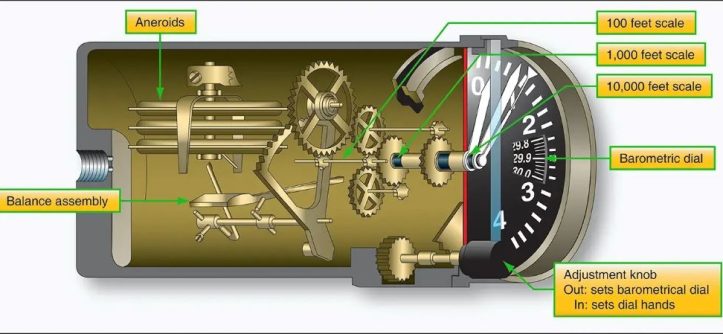Maintaining the accuracy of an aircraft’s oil pressure gauge is critical for safe and efficient flight operations. The oil pressure gauge monitors the engine’s lubrication system, ensuring it operates within safe parameters. For pilots and aircraft mechanics, understanding how to calibrate an aircraft oil pressure gauge is essential to prevent engine damage and ensure reliable performance. At Bixideco, we provide insights and resources to help aviation professionals keep their aircraft in top condition. This article outlines the step-by-step process to calibrate an oil pressure gauge, ensuring precision and safety in the skies.
Why Calibrating Your Oil Pressure Gauge Matters
The oil pressure gauge in an aircraft is a vital instrument that displays the pressure of oil circulating through the engine. An inaccurate gauge can lead to misinformed decisions, potentially causing engine failure or costly repairs. Therefore, regular calibration is necessary to confirm the gauge provides accurate readings. For a deeper understanding of how these gauges function, check out Bixideco’s guide on aircraft oil pressure gauges, which explains their role in aviation safety. Calibration ensures the gauge aligns with the actual oil pressure, giving pilots confidence in their engine’s health.
Understanding the Basics of Oil Pressure Gauges
Before diving into calibration, it’s helpful to understand how an oil pressure gauge works. These gauges measure the force exerted by oil as it circulates through the engine, typically displayed in psi (pounds per square inch) or bars. Most aircraft use mechanical or electronic gauges, each requiring specific calibration methods. Mechanical gauges rely on a diaphragm or Bourdon tube, while electronic gauges use sensors to transmit data. Knowing your gauge type is the first step in calibration, as procedures vary slightly depending on the mechanism.
Tools and Equipment Needed for Calibration
To calibrate an oil pressure gauge, you’ll need specialized tools to ensure accuracy. Gather the following items before starting:
- A pressure calibrator or test pump capable of generating precise oil pressure.
- A reference gauge with a known accuracy, certified for aviation use.
- Wrenches and screwdrivers for accessing the gauge.
- A clean, well-lit workspace to avoid contamination.
- Manufacturer’s manual for your specific aircraft and gauge model.
Having the right tools ensures the calibration process is efficient and accurate. Additionally, consult the aircraft’s maintenance manual for any model-specific requirements.
Step-by-Step Guide to Calibrating an Aircraft Oil Pressure Gauge
Calibrating an oil pressure gauge requires precision and attention to detail. Follow these steps to ensure the process is done correctly.
Step 1: Prepare the Aircraft
Safety is the top priority. Before starting, ensure the aircraft is powered off and the engine is cool. Disconnect the battery to prevent accidental electrical surges. Locate the oil pressure gauge and review the aircraft’s maintenance manual for specific instructions. This preparation minimizes risks and ensures a smooth calibration process.
Step 2: Remove or Access the Gauge
Depending on the aircraft, you may need to remove the oil pressure gauge from the instrument panel or access it in place. Use appropriate tools to carefully disconnect the gauge, avoiding damage to wiring or tubing. For electronic gauges, take note of sensor connections. If the gauge is hard to access, consult a certified aircraft mechanic to avoid complications.
Step 3: Connect the Calibration Equipment
Attach the pressure calibrator or test pump to the oil pressure gauge. Ensure all connections are secure to prevent leaks. The reference gauge should be connected in parallel to compare readings. This setup allows you to apply controlled pressure and verify the gauge’s accuracy against a trusted standard.
Step 4: Apply Test Pressures
Gradually apply pressure using the calibrator, starting at the low end of the gauge’s range (e.g., 10 psi). Compare the aircraft gauge’s reading to the reference gauge. Slowly increase the pressure in increments (e.g., 20, 40, 60 psi) up to the maximum operating range. Record the readings at each interval. If discrepancies are found, the gauge may need adjustment or replacement.
Step 5: Adjust the Gauge (If Necessary)
For mechanical gauges, adjustments may involve tweaking the internal mechanism, such as the Bourdon tube or diaphragm, following the manufacturer’s guidelines. Electronic gauges may require recalibrating the sensor or updating software settings. If the gauge cannot be adjusted to match the reference gauge, it may need to be replaced. Always consult the manufacturer’s manual for specific adjustment procedures.
Step 6: Verify Calibration
After adjustments, repeat the pressure tests to confirm the gauge now reads accurately. Apply the same pressure increments and compare readings with the reference gauge. If the readings align within acceptable tolerances (typically ±2-5% of the reference), the calibration is successful. If not, further adjustments or professional assistance may be required.
Step 7: Reinstall and Test in the Aircraft
Once calibrated, reinstall the gauge if it was removed. Double-check all connections to ensure they are secure. Power on the aircraft and run the engine at idle to verify the gauge displays expected oil pressure readings. Cross-reference with the aircraft’s normal operating range, as specified in the manual. If the readings are consistent, the calibration is complete.

Common Challenges and How to Address Them
Calibrating an oil pressure gauge can present challenges. For instance, leaks in the calibration setup can skew results. To avoid this, ensure all connections are tight and use high-quality fittings. Another issue is gauge drift, where readings become inaccurate over time. Regular maintenance, as recommended by the Federal Aviation Administration (FAA), can help prevent drift. If the gauge is unresponsive or erratic, it may indicate internal damage, requiring replacement rather than calibration.
Best Practices for Maintaining Gauge Accuracy
To keep your oil pressure gauge accurate between calibrations, follow these tips:
- Perform regular inspections as part of routine aircraft maintenance.
- Avoid exposing the gauge to extreme temperatures or vibrations.
- Monitor for signs of oil leaks or contamination, which can affect readings.
- Schedule calibration at intervals recommended by the manufacturer, typically every 12-24 months.
By following these practices, you can extend the lifespan of your gauge and maintain reliable performance.
When to Seek Professional Help
While many pilots and mechanics can calibrate an oil pressure gauge, some situations call for professional expertise. If you lack the necessary tools or experience, or if the gauge shows persistent inaccuracies, consult a certified aircraft maintenance technician. Professionals have access to advanced calibration equipment and can ensure compliance with aviation regulations. For complex electronic gauges, a technician may also update firmware or diagnose sensor issues.
Conclusion
Calibrating an aircraft oil pressure gauge is a critical task that ensures engine safety and performance. By following a systematic process—preparing the aircraft, using the right tools, applying test pressures, and verifying results—you can maintain accurate readings. Regular maintenance and timely calibrations prevent costly repairs and enhance flight safety. Whether you’re a pilot or mechanic, understanding this process empowers you to keep your aircraft in optimal condition. For additional resources, reputable sites like AOPA offer valuable insights into aircraft maintenance.
Frequently Asked Questions
Why is calibrating an oil pressure gauge important?
Calibrating ensures the gauge provides accurate readings, preventing engine damage and ensuring safe flight operations.
How often should I calibrate my aircraft’s oil pressure gauge?
Calibration is typically recommended every 12-24 months, depending on the manufacturer’s guidelines and aircraft usage.
Can I calibrate an oil pressure gauge without professional help?
Yes, with the right tools and knowledge, but complex or electronic gauges may require professional assistance.
What happens if my oil pressure gauge is inaccurate?
Inaccurate readings can lead to misinformed decisions, potentially causing engine failure or costly repairs.
Where can I find reliable resources on aircraft maintenance?
Websites like Bixideco and the FAA provide detailed guides and regulations for maintaining aircraft components.



